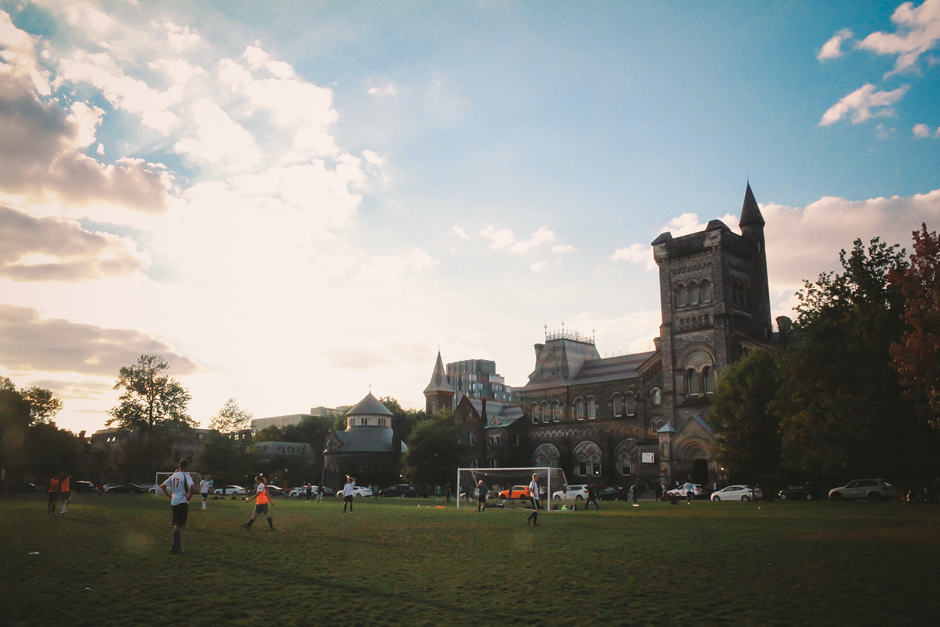Student groups are learning to adapt to the recently completed back campus field renovation, with sports teams shifting practices and games to other spaces on and off campus.
The launch of the $9.5 million back campus fields project was met with considerable opposition from students, staff, faculty, and alumni — including author Margaret Atwood — who argued that the destruction of the natural turf on back campus would hurt the environment and undermine athletic groups. The two synthetic turf fields were constructed, in part, to host the 2015 Pan Am Games.
Historically, back campus had a significant place in Canada’s military culture, with the field serving as training grounds for U of T students who were called to fight in both the First and Second World Wars.
Despite strong opposition, the project was underway on July 1, 2013, leaving many to wonder about the possible implications associated with the decision. The project aimed to provide a more accessible playing surface for sports teams on campus and to serve as the official host of women’s field hockey in both the Pan Am and Parapan Am games starting in the summer of 2015.
Back campus also served as a symbol of student culture and voice on campus. Brad Evoy, a former member of Keep Back Campus Green, a group opposed to the back campus project, and former external commissioner of the Graduate Students’ Union, said that the back campus fields project hurt student culture.
“The loss of back campus embodies a wider struggle on this campus for space, both physically and in terms of the space of dissent and the student voice. Back campus was historically student space, defended from administrative overreach since 1892 when students paid the cost of maintaining the field … through to last year. This space is lost to us all now, and will remain so until the turf decays and is replaced,” Evoy said.
Now that construction is completed, student groups are learning to adapt to the change from natural grass to artificial turf, with some noting that the completed project is much more accessible and safer for athletes.
Richard*, a second-year criminology student, expressed mixed opinions on the change.
“Although I’d personally prefer grass, in the long-term turf is much more maintainable and safer for athletes who use it,” Richard said.
Emma Stairs, a field hockey player, praised the new fields. “The back campus field is amazing. Our field hockey team, for the first time, is able to play on a surface that is conductive to the sport and allows us to train at an elite level,” she said.
*Name changed at student’s request.


